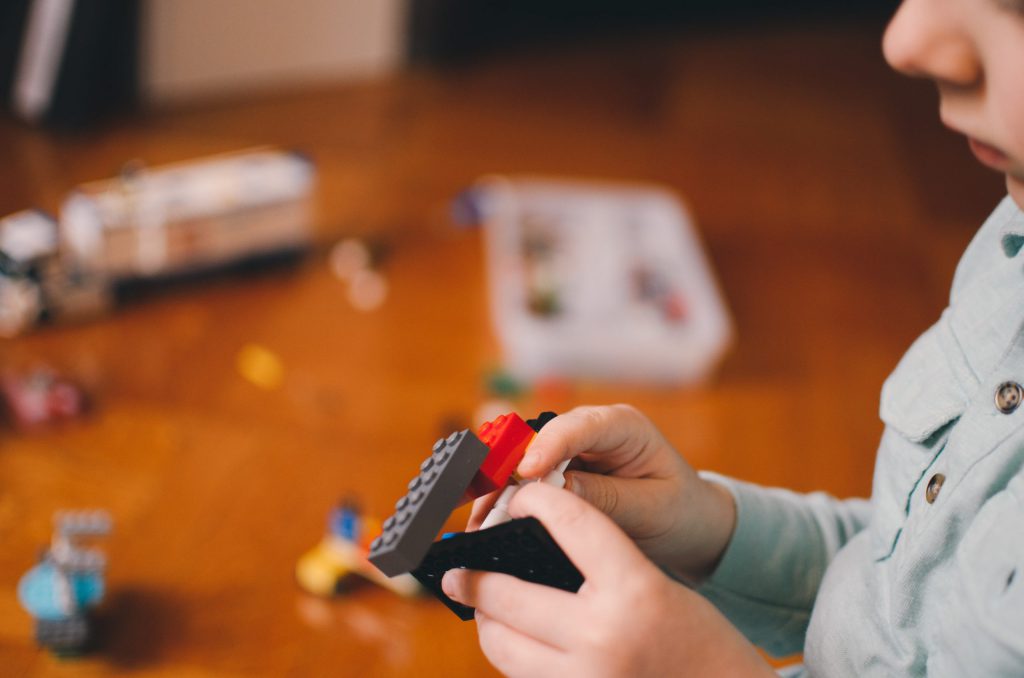During your child’s occupational therapy visit, you have probably heard the terms “fine motor” and “dexterity”. These are common terms used when discussing OT goals. But do you know exactly what they mean?
Fine motor is the umbrella and dexterity falls under it. Fine motor pertains to the ability to control small movement with your hands and fingers while dexterity refers to manipulating small objects efficiently using the muscles in the hands and fingers.
Fine motor and dexterity can include tasks such as using scissors, handwriting, clothing fasteners, constructing block designs, and tying your shoes. They are a huge area of development and very common factors in writing occupational therapy goals for children. For young children fine motor skills are important for play; coloring, manipulating toys and things of that nature. Once school-aged those skills mature into handwriting skills, cutting, and the ability to perform self-care tasks.
Building your child’s fine motor and dexterity skills is crucial during development and can be done at home using fun activities to build on and carry over what might be being done during therapy sessions.
Below are 10 at-home activities to build fine motor skills:
1. Mr. Potato Head
The pieces are fairly large and easy to grasp making this a great starter activity for building that initial strength and coordination to develop fine motor skills. *It is also a great way to learn body parts and body awareness.
2. Cereal jewelry
Using string or yarn measure out the desired amount and tie a knot at the end. Now all you need is Cheerios or Fruit Loops! Have your child string the cereal onto the yarn to create a bracelet or necklace.
3. Play-Doh
Play-Doh is perfect for building strength! Have your child copy a design you make, build a person, roll out a “snake”, all of this will build fine motor strength and work on visual perceptual skills when copying figures and designs. Make sure your child incorporates both hands when making their creations.
4. Salt tray letter tracing
For this you will need salt, a cookie sheet, food coloring, and letter models. You can dye salt using food coloring! In a zip lock bag mix a couple drops of coloring with salt and mix it together. Let this mixture sit until the salt is dry. Once dry pour it into a pan and have your child copy letters into the salt using their finger or Q-tip to help develop pincer grasp.
5. Bubble wrap
Super simple! Pop the bubble wrap! Smaller bubble wrap will strengthen the fingers while larger bubble wrap will strengthen the hand.
6. Water transfer
Fill a bowl or bucket with water and place an empty bowl or bucket beside it. Have your child soak up water and squeeze it into the empty bucket. This will work on hand strengthening and water is a great sensory play source!
7. Name stickers
Peeling and placing stickers requires dexterity and fine motor coordination. Print or write your child’s name on paper and have them trace the letters using the stickers placing them directly onto the line. *placing them accurately will also work on visual perception.
8. Spray bottles
A great activity for hand strengthening! Fill various spray bottles with water and have them water the plants, or put paint into multiple bottles and let them spray the paint onto paper!
9. Legos
Copying designs or creating their own this activity is great for strengthening and visual perception. The smaller blocks will require more dexterity and finger strength while the bigger blocks will help build grasp.
10. Paper plate haircuts
Draw a fun face onto a paper plate and pre-cut fringe on the top (hair) allow your child to be the “hairstylist” while building scissoring skills!
Activity Related Supplies:





